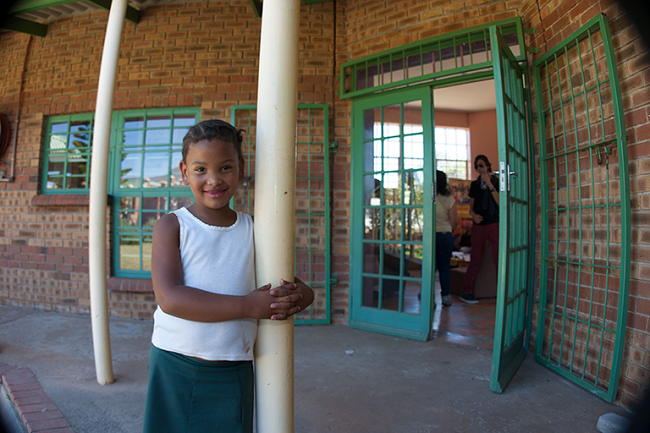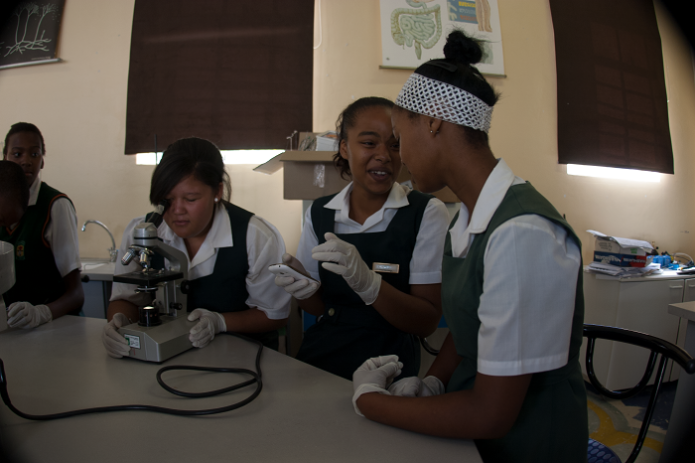Alleviating malnutrition with an educational Spirulina production program for children
Whilst preparing pupils at the “Herzliya” Hebrew Gymnasium in Tel Aviv, to function as adults in the local society and the global world, an educational application and a food production method suited for 3rd world countries was developed by the pupils, Sipirulina experts from Live Spirulina farm and teachers.
The application that evokes the children to the idea of solidarity between peoples, sharpens their sensitivity to the distress of others, and develops their creative thinking about ways of giving and supporting communities at risk. It combines meaningful and effective learning with relevant real life issues and tangible action. We have tapped into knowledge that has the potential to change one of the most shameful maladies of humanity: malnutrition. Our organization would like to pass this experience and this knowledge so that it can reach those who truly need it, hungry children across the globe.
As stated by the State of Food Insecurity in the World, FAO, 2013 regarding the current state of affairs:
- Poor nutrition causes nearly half (45%) of deaths in children under five – 3.1 million children each year.
- One out of six children, roughly 100 million, in developing countries is underweight.
- One in four of the world’s children are stunted, 80 percent of the world’s stunted children live in just 20 countries.
- 66 million primary school-age children attend classes hungry across the developing world, with 23 million in Africa alone.
This situation can be remedied with a blue-green microalga called Spirulina. Spirulina is the richest whole-food source nature has to offer. It is extremely digestible and contains many natural antioxidants, vitamins, minerals, carotenoids and perhaps most importantly for those who are malnourished – protein.
In fact, with 60% protein content, Spirulina, yields 20 times more protein, per unit area, than soybeans, 40 times more than corn, and over 200 times more than beef using a fraction of the energy and water in comparison. Spirulina was declared by the United Nations World Food Conference of 1974 as “the best food for the future”; The UN General Assembly has called upon Member States, United Nation agencies and other intergovernmental organizations, as well as non-governmental organizations and the private sector, “to encourage the production and use of Spirulina”; The United Nations Food and Agriculture Organization (FAO) has declared the need to improve technical and economic solutions to Spirulina production in environmentally impoverished conditions”.
But what separates between this ‘super foodstuff’ and those who need it most is money;
Spirulina is sold at health food stores all over the world but only the most privileged can afford it. Attempts at growing Spirulina in local communities have rendered limited success due to high costs and complex growing methods. Our project challenges this state of affairs. It may seem utopian, but it is completely realistic, as well as surprisingly inexpensive and simple to implement.

Pupils at our school grow and harvest Spirulina using simple and affordable methods. In fact, within 3 months they have become experts, and passed this knowledge on, educating additional trainers. They wish to continue spreading this knowledge to other children so that they can do the same: learn how to grow, implement, consume the Spirulina and pass the knowledge forward; Becoming a link in a chain that holds great nutritional and educational value; a chain of trainers that grow Spirulina to foster real change for every malnourished boy or girl around the world.
The Project’s Outline:
The initial stage of the program focused on research and intensive study of the Spirulina algae characteristics, simplifying growing conditions and how to create an edible product.
At first, each pupil was assigned the care of a few 1.5 liter recycled plastic bottles containing a sample of the Spirulina culture and a simple growing medium based on widely available agricultural fertilizers and baking soda. Since Spirulina, requires light to photosynthesize, the students stir the solution every few hours, a methodology used where no electricity is available. A year ago, we devised a more efficient system, arranging rows of bottles on a wooden stand and connected them to an electric air pump and thin hoses with a pressure distribution system based on drip irrigation that breathe air into the solution, stirring the algae constantly. This inexpensive apparatus now cultivates Spirulina at a rate analogous to what topmost academic studies have achieved! With 650 plastic bottles containing microalgae culture, in a short period of time, we produced the equivalent of 65 kilos of fresh nutritional matter. We are also cultivating Spirulina in ponds, under various weather and economic conditions, with or without electricity, and utilizing various instruments and resources to gather more data on small to medium scale Spirulina farms.
The following stage included formulating written protocols for growing the Spirulina microalgae intended for different locations, growing surroundings, weather conditions, economic conditions and resources as well as online guides in different languages.
After testing the methodology in various schools in Israel a delegation of 7 children has just returned from a 9 days expedition to Cape Town, South Africa, in which they have taught 5 different high schools in Cape Town and the rural area surrounding it, how to grow Spirulina easily and cost effectively in recycled soft drink bottles for their own consumption. In one school they have set up a production pond that will provide Spirulina for the children living at the hostle on the campus to be consutmed with their meals, daily.
The expedition was extremely successful and all of the schools have taken this project on-board and are cultivating Spirulina in their schools, at their homes and hopefully soon they will incorporate this into their local communities. Following the expedition, an on-line Spirulina growing community and knowledge base for children was established at https://www.justspirulina.org/
We are now in the process of planning our coming up summer trips to Ethiopia and Rwanda as well as an orphange in Uganda, in order to implement the program. An International Spirulina Communications and Training Center will be established at the Herzliya Hebrew Gymnasium that will provide on-line, accessible guidance, assistance and training for Spirulina growers in schools around the world.
At this stage we need financial assistance in order to fund our next trips to Africa and the Training Center.
Spirulina – General Information:
- Spirulina is a wildly cultivated cyanobacteria used primarily as a dietary supplement and whole food. It occurs naturally in tropical and subtropical lakes with high pH and high concentrations of carbonate and bicarbonate (Africa, Asia, south and Central America).
- Spirulina is recognized as safe for human consumption by the FDA. [http://www.accessdata.fda.gov/scripts/fcn/gras_notices/GRN000394.pdf].
- Spirulina is one of the primary tools advertised by the WHO to combat child malnutrition some examples include:
- The Intergovernmental Institution for the use of Micro-algae Spirulina Against Malnutrition IIMSAM, was launched in the mid-1970’s to promote Spirulina as a high nutritional food to fight against starvation and malnutrition in the world (Habib et al., 2008).
- India had a one year feeding program of Spirulina (1 g/d) with 5,000 pre-school children. A spiulina-supplemented diet reduced the occurrence of “Bitof’s Spot”, a symptom of vitamin A deficiency, from 80% to 10% (Seshadriet al., 1993).
- Observations on the utilization of spirulina as an adjuvant nutritive factor in treating some diseases accompanied by a nutritional deficiency. [ by V. Fica, et al. 1984. Clinica II Medicala, Spitalui Clinic, Bucuresti. Med. Interna 36 (3). Romania. (In Romanian)].
- Effectiveness of spirulina algae as food for children with protein-energy malnutrition in a tropical environment.[by P. Bucaille. 1990. University Paul Sabatier, Toulouse, France. Oct. 1990. Zaire. (in French).]
- Spirulina contains about 60% complete protein and has an extremely high nutritional density. Spirulina intake has also been found to prevent damage caused by toxins affecting the heart, liver, kidneys, neurons, eyes, ovaries, DNA, and [Chamorro-Cevallos, G.; B.L. Barron, J. Vasquez-Sanchez (2008)].
- It demonstrates anti-inflammatory and anti-oxidative effects. [J Clin Biochem Nutr.2012].
- Spirulina has been studied in vitro against HIV [Ayehunie, S. et al. “Inhibition of HIV-1 Replication by an Aqueous Extract of Spirulina platensis (Arthrospira platensis)”].
Spirulina is farmed commercially across the globe and its distribution as a food supplement can be found on many pharmacy or specialist food store shelves as an off the shelf product.

